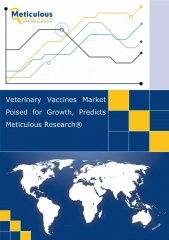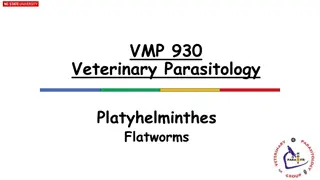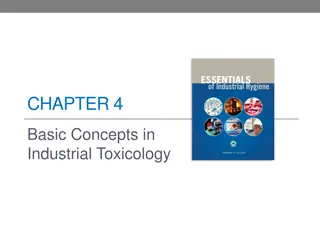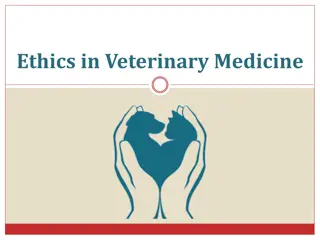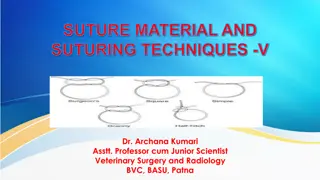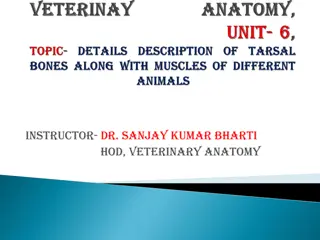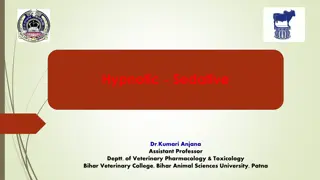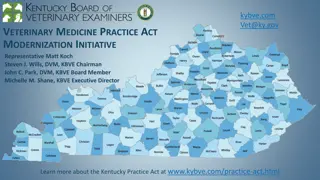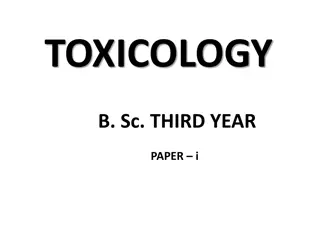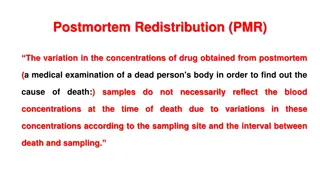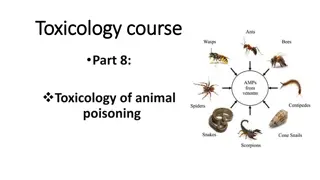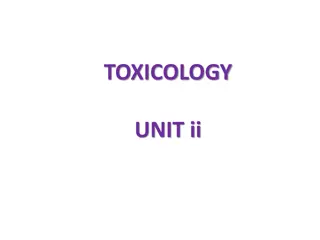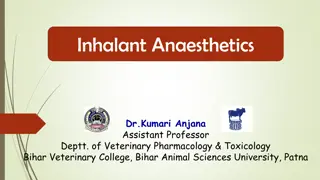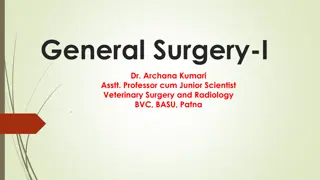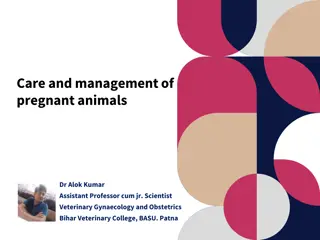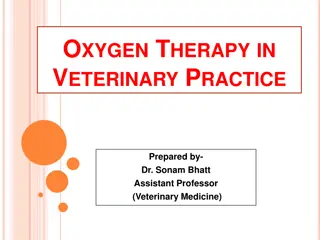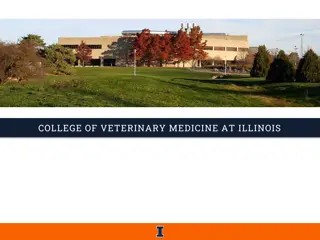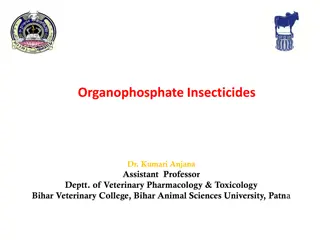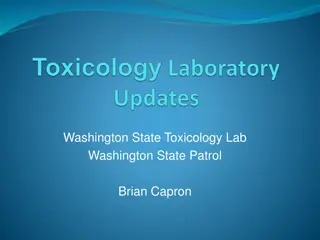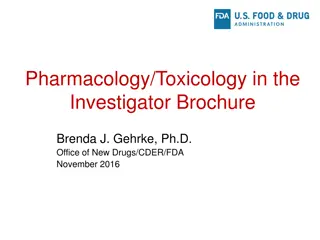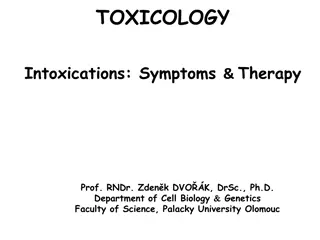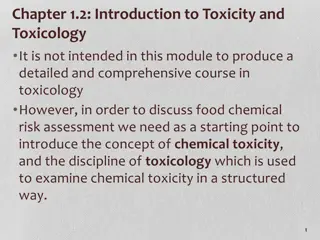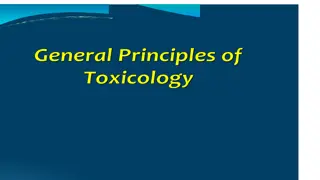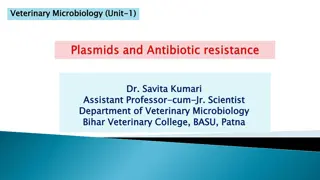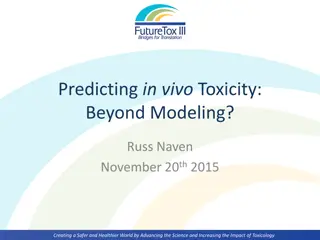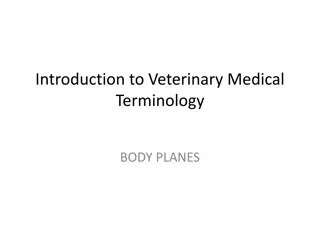Introduction-to-Brijon-Veterinary-Clinic.pptx
At Brijon veterinary Urgent care we are committed to achieving a higher standard for veterinary care. By providing expert care to pets in a timely manner, we strive to treat every dog or cat like our own.\n
5 views • 6 slides
Brijon-Veterinary-Urgent-Care.pptx
Elevate your pet's well-being with Brijon Veterinary Urgent Care, your local partner committed to more than just exceptional veterinary services. We go the extra mile in contributing to the overall health and happiness of pets across Massachusetts. Through active community engagement and educational
8 views • 7 slides
Veterinary Vaccines Market Poised for Growth, Predicts Meticulous Research®
Veterinary vaccines are integral to the veterinary healthcare industry as they help prevent diseases and their spread. They also reduce the risk of transmission of infections from household pets to their owners. Several types of vaccines, such as live attenuated, inactive, recombinant, and other vac
0 views • 3 slides
Understanding Veterinary Parasitology: Mites, Poultry Mite Characteristics, and Minor Mites Quiz
Explore the world of veterinary parasitology with a focus on mites, including poultry mite characteristics and a quiz on minor mites. Learn about different mite species affecting birds and animals, their identification, traits, and management. Delve into distinguishing features, clinical signs, and
5 views • 20 slides
Addressing the Veterinary Clinical Faculty Workforce Crisis at UMN
Veterinary institutions like UMN are facing a critical shortage of clinical faculty, hindering their ability to train specialists and meet the growing demand for veterinarians. To combat this issue, UMN is proposing a unique license to attract highly qualified faculty from non-accredited schools, en
3 views • 7 slides
Veterinary Vaccination Guidelines and Regulation Overview
This presentation provides an overview of veterinary vaccination guidelines and regulations, covering topics such as the National Veterinary Stockpile, types of vaccines, vaccine delivery, storage, and handling. It also discusses the regulatory framework governing veterinary vaccines and the role of
5 views • 30 slides
Understanding Flatworms and Roundworms in Veterinary Parasitology
This comprehensive content explores the world of flatworms and roundworms in veterinary parasitology. It covers various classes such as Turbellaria, Monogenea, Trematoda, and Cestoda, detailing their characteristics, importance in veterinary medicine, and complex life cycles. The content touches on
1 views • 34 slides
Understanding Basic Concepts in Industrial Toxicology
Industrial toxicology is a vital field that studies the effects of various agents on organism health through mechanisms of action, toxicokinetics, and more. It explores toxic chemical absorption, distribution, metabolism, and elimination, as well as toxic effects on major organ systems. Learn about
0 views • 35 slides
Understanding Toxicology: Dose-Response and Toxicity Assessment
The study of toxicology involves understanding dose-response relationships, lethal concentrations, tolerance limits, toxicity curves, and factors influencing toxicity. Dose, response, acute toxicity, chronic toxicity, LD50, and ED50 are key concepts in toxicology that help assess the effects of chem
2 views • 24 slides
Ethics in Veterinary Medicine: Addressing Ethical Dilemmas in Animal Care
Ethics in veterinary medicine focuses on the moral aspects of human behavior and decision-making when faced with conflicting choices. It explores key issues such as animal surgeries, hospitalization, and euthanasia, aiming to determine the most ethical course of action in treating animals. Veterinar
0 views • 30 slides
Veterinary Suturing Techniques and Materials Overview
Understanding the principles of suturing in veterinary surgery is crucial for effective wound closure. This article covers different suturing techniques such as apposition, inversion, and miscellaneous sutures, along with details on needle handling, tissue penetration depth, and suture placement. Im
1 views • 14 slides
Understanding Tarsal Bone Anatomy in Veterinary Science
Tarsal bones in veterinary anatomy play a crucial role in the structure of an animal's hind limbs. Comprising five short bones arranged in distinct rows, including the tibial, fibular, and central tarsals, the tarsus supports movement and stability. The largest tarsal, known as the calcaneal tubercl
1 views • 24 slides
Overview of Sedatives and Hypnotics in Veterinary Pharmacology
This chapter discusses the classification, salient features, and uses of sedatives and hypnotics in veterinary pharmacology. Sedatives subdue excitement and induce calmness without necessarily causing sleep, while hypnotics induce and maintain sleep. Both classes of drugs act as CNS depressants and
1 views • 23 slides
Ultimate Guide to Becoming an Outstanding Veterinary School Applicant
Prepare yourself for veterinary school by excelling in college, taking recommended courses, maintaining a high GPA, gaining veterinary experience, and getting involved on campus. Focus on academics, get involved in extracurricular activities, and start preparing early for standardized tests such as
1 views • 25 slides
Kentucky Veterinary Medicine Practice Act Modernization Initiative Overview
Kentucky Veterinary Medical Board of Examiners (KBVE) has undertaken a comprehensive modernization effort for the state's Practice Act. The initiative involves reviewing national models, engaging professional associations, and collaborating with key stakeholders to propose updates. The modernization
1 views • 15 slides
Comprehensive Guide to Ophthalmic Examination in Veterinary Medicine
A detailed guide on the ophthalmic examination of animals led by Dr. Bipin Kumar, Assistant Professor at the Bihar Veterinary College. The examination covers history taking, general physical examination, evaluation of vision, pupil function, eyelid function, adnexal and anterior segment examination,
1 views • 9 slides
Introduction to Toxicology: Science and Impact on Living Organisms
Toxicology is the study of adverse effects of chemicals on living organisms. It assesses probability of occurrence, quantitatively and qualitatively analyzing toxic effects. Toxicants are agents causing harmful responses in biological systems. Environmental toxicology focuses on pollutants' effects
0 views • 12 slides
Understanding Postmortem Redistribution in Forensic Toxicology
Postmortem Redistribution (PMR) refers to the variation in drug concentrations obtained from postmortem samples, which may not accurately reflect the levels at the time of death due to redistribution mechanisms. In forensic toxicology, assessing drug severity relies on blood concentrations, with cha
0 views • 16 slides
Understanding Animal Venom and Snake Classification in Toxicology
Animal venom, particularly snake venom, contains various toxins that can have detrimental effects on the body. Different types of snake venom target specific systems, such as neurotoxic venom affecting neuromuscular junctions and hemotoxic venom impacting the cardiovascular system. Understanding the
4 views • 27 slides
Overview of Toxicology: Understanding Chemical Risks and Health Impacts
Toxicology is a crucial field that assesses the effects of various toxic substances on human health and the environment. From heavy metals to solvents, radiation, pesticides, and animal toxins, this discipline plays a vital role in identifying and managing risks associated with exposure to harmful c
0 views • 25 slides
Understanding Inhalation Anaesthetics in Veterinary Pharmacology & Toxicology
Explore the world of inhalation anaesthetics in veterinary medicine, from the concept of MAC to the classification of gaseous and volatile agents. Learn about blood/gas and oil/gas partition coefficients, along with the properties of popular volatile anaesthetics like Ether, Halothane, and Methoxyfl
1 views • 15 slides
Evolution of Veterinary Surgery: Insights from Ancient India to Modern Innovations
Delve into the historical perspective and advancements in veterinary surgery, starting with ancient Indian veterinarians like Salihotra and Palakapya, through the foundational work of Susruta Samhita, to the modern developments in surgical methods like anesthesia, microbiology, antibiotics, and bloo
4 views • 18 slides
Overview of Veterinary Clinical Pathology and Importance of Anticoagulants
Veterinary clinical pathology involves the laboratory diagnostics and analysis of bodily fluids and tissues to support the diagnosis, treatment, and prevention of diseases. This field encompasses interpreting blood tests, blood smear examinations, and the use of various anticoagulants in specimen co
3 views • 46 slides
Care and Management of Pregnant Animals in Veterinary Practice
This comprehensive guide by Dr. Alok Kumar, Assistant Professor and Scientist in Veterinary Gynaecology and Obstetrics at Bihar Veterinary College, covers key aspects of care and management of pregnant animals, including objectives, conception management, pregnancy diagnosis, nutritional management,
5 views • 19 slides
Oxygen Therapy in Veterinary Practice
Oxygen therapy is a crucial intervention in veterinary medicine, especially in emergency situations to address hypoxia and increase oxygen delivery to tissues. It involves delivering high concentrations of oxygen to optimize oxygen levels in the blood. Indications for oxygen therapy include hypoxia
1 views • 15 slides
Exploring the College of Veterinary Medicine at Illinois
Dive into the world of veterinary medicine at the College of Veterinary Medicine at Illinois through this visual journey. Discover the facilities, programs, and opportunities available at this renowned institution. Learn about the cutting-edge research and compassionate care provided by faculty and
0 views • 5 slides
Understanding Organophosphate Insecticides in Veterinary Pharmacology & Toxicology
Organophosphate insecticides, discussed by Dr. Kumari Anjana, Assistant Professor at Bihar Veterinary College, have a significant impact in controlling pests. These compounds inhibit cholinesterase enzymes, and their uses span across various applications including insecticides, acaricides, and herbi
0 views • 23 slides
Toxicology Laboratory Updates and Certifications
The Washington State Toxicology Lab, under the Washington State Patrol, has recent staffing updates, including new hires and return of staff on maternity leave. Updates on validated methods and toxicologist certifications are provided, showcasing the lab's commitment to quality and accuracy. A new t
0 views • 26 slides
Veterinary Nursing Awareness Month 2024
Celebrate Veterinary Nursing Awareness Month in 2024 with informative and engaging content slides. Explore important messages and takeaways to promote awareness and appreciation for veterinary nursing. Join the campaign to recognize the valuable contributions of veterinary nurses across the globe. S
0 views • 4 slides
Overview of Veterinary Toxicology Syllabus and Topics Covered
Detailed overview of the Veterinary Toxicology syllabus including general toxicology, toxicity caused by metals and non-metals, poisonous plants, agrochemical toxicity, fungal and bacterial toxins, venomous bites and stings, and more. The syllabus covers a wide range of topics related to toxicology
0 views • 12 slides
Understanding Pharmacology and Toxicology in Investigator Brochures
Explore the essential aspects of pharmacology and toxicology covered in Investigator Brochures, including nonclinical information, safety pharmacology, general toxicology, genetic toxicology, and more. Learn about the significance of pharmacology in predicting intended and unintended effects, consid
1 views • 40 slides
Overview of Toxicology: Intoxications, Symptoms, and Therapy
Understanding toxicology is crucial to dealing with various types of intoxications, including accidental, foodborne, inhalation, industrial, and intentional exposures. Symptoms of toxic exposure can vary widely, affecting different body systems such as the cardiovascular, respiratory, and nervous sy
0 views • 9 slides
Agricultural and Veterinary Chemicals Regulation in Australia - Overview
The regulation of agricultural and veterinary chemicals in Australia is overseen by the Australian Pesticides and Veterinary Medicines Authority (APVMA), established in 1993. The APVMA is responsible for assessing and registering pesticides and veterinary medicines to ensure their safety and effecti
0 views • 15 slides
Analytical Toxicology: Techniques and Sample Analysis in Clinical Toxicology
Analytical toxicology involves the observation, identification, and measurement of foreign compounds in biological and other samples, such as urine, blood, stomach contents, nails, hair, and DNA. Various techniques are used to isolate and identify drugs and poisons present in these samples. This fie
0 views • 12 slides
Introduction to Toxicity and Toxicology in Food Chemical Risk Assessment
This module introduces the concept of chemical toxicity and the discipline of toxicology in relation to food chemical risk assessment. It touches upon historical aspects, such as the case of Socrates' death by hemlock, the contributions of Mathieu Joseph Bonaventure Orfila in forensic toxicology, an
0 views • 18 slides
Understanding Toxicology and Measures of Toxicity
Toxicology is the study of the adverse effects of chemicals on living organisms, involving xenobiotics and poisonous substances. Toxicologists examine the nature of these effects, testing in lab animals for measures of toxicity such as mortality, teratogenicity, carcinogenicity, and mutagenicity. Ke
0 views • 18 slides
Assistant Professor Dr. Savita Kumari at Bihar Veterinary College, BASU, Patna
Dr. Savita Kumari serves as an Assistant Professor in the Department of Veterinary Microbiology at Bihar Veterinary College, BASU, Patna. She is actively involved in teaching and research in the field of Veterinary Microbiology.
0 views • 20 slides
Advancing In Vivo Toxicity Prediction Beyond Modeling
Explore the challenges and opportunities in predicting in vivo toxicity beyond traditional models. Learn about confidence in toxicity prediction, recently discontinued drugs due to safety concerns, and the importance of recognizing toxicological signals in preclinical stages. Discover how computatio
0 views • 27 slides
Understanding Food and Nutritional Toxicology
Food and nutritional toxicology delve into the science of poisons, toxins, and toxicants found in food. It covers substances harmful to consumers, including natural toxicants, contaminants, and additives. Nutritional toxicology focuses on the overlap between nutrition and toxicology, exploring the i
0 views • 17 slides
Veterinary Medical Terminology: Introduction to Body Planes and Common Terms
Explore the fundamental aspects of veterinary medical terminology, focusing on body planes, common terms for body parts, and root words. Learn about directional terms and how to use them appropriately in a veterinary context. Images and information from "Veterinary Medical Terminology, 2nd edition b
0 views • 20 slides


